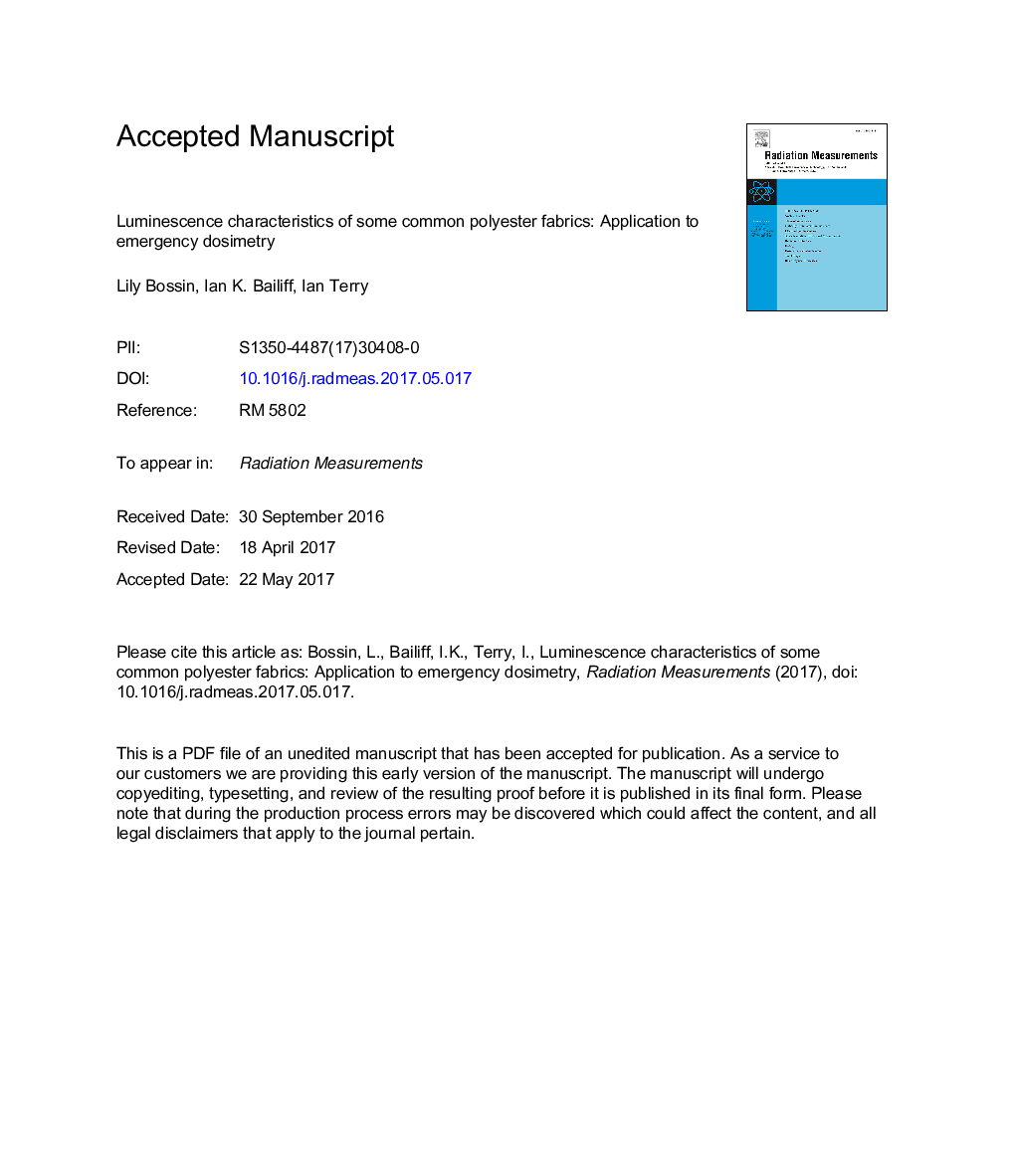| Article ID | Journal | Published Year | Pages | File Type |
|---|---|---|---|---|
| 8250444 | Radiation Measurements | 2017 | 14 Pages |
Abstract
A set of garment polyester-mix fabrics was tested for their potential suitability as surrogate dosimetry materials using optically and thermally stimulated luminescence techniques. A strong native blue-stimulated optically stimulated luminescence and thermoluminescence signal was observed with unirradiated samples, but this could be avoided by measurement of infra-red stimulated luminescence, and a sample of blue polyester-cotton mix fabric exhibited particularly high sensitivity to radiation dose. However, near complete fading at room temperature within several hours and rapid bleaching of the signal when exposed to daylight limit the deployment of this mode of measurement. The fading behaviour is critically dependent on the atmosphere in which the material is measured and on the storage conditions, where a reduction in oxygen significantly reduces the rate of fading. A cathodoluminescence study of the samples performed in a scanning electron microscope revealed complex emission spectra obtained with spatially integrated measurements and, in one fabric examined in more detail, the spatially resolved emission was found to vary in intensity and wavelength within the polyester fibre filaments which is likely to be associated with differences in crystallinity.
Related Topics
Physical Sciences and Engineering
Physics and Astronomy
Radiation
Authors
Lily Bossin, Ian K. Bailiff, Ian Terry,
